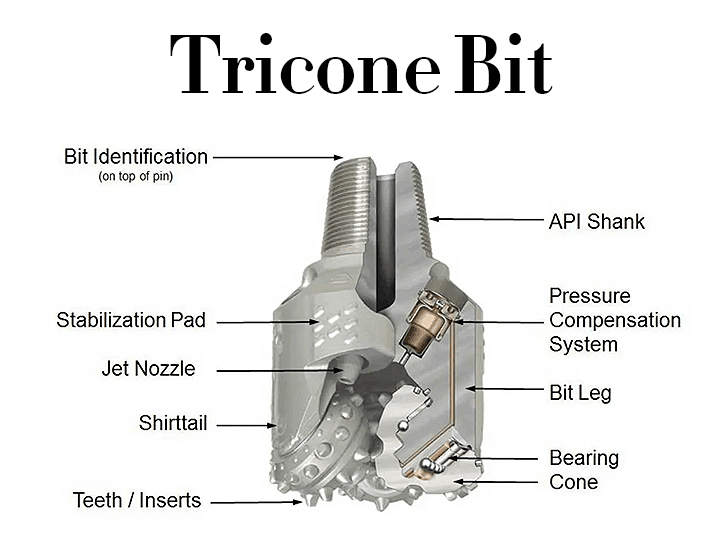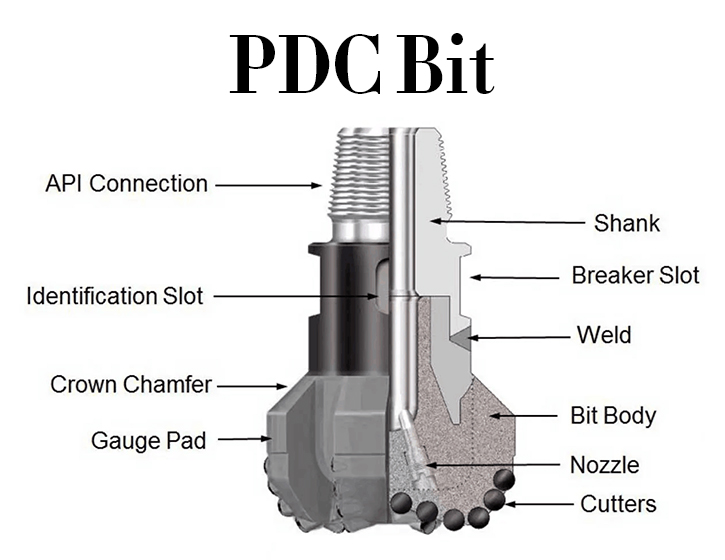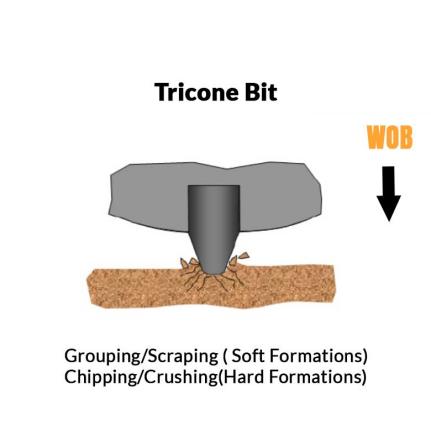Tricone Bit VS PDC Bit, Which Is the Best Option For You?
Tricone Bit VS PDC Bit, Which Is the Best Option For You?

A drill bit is a tool to drill a cylindrical hole (wellbore) to discover and extract crude oil and natural gas.
In the oil and gas industry, it’s vital to have the right equipment for every single one of your projects. Using the wrong tools can lead to disasters, so it’s important to have the right information before you start. Tricone bits and PDC drill bits are common in the oil and gas industry. Tricone Bit VS PDC Bit, Which is the best option for You?
Tricone Bit in the Oil and Gas Industry
The tricone bit was invented by Hughes engineer and Ralph Neuhaus and was an adaption of Baker Hughes's original two-cone drill bit. A tricone bit is a drill bit with a head that is divided into three main parts. The tricone bit consists of three rotating cones working inside each other with its row of cutting teeth. The roller-cone bits are used to drill formations from soft to hard. The soft formations use steel-tooth bits and the hard use tungsten carbide.
The biggest advantage the tricone bits have over any other drill bit is the test of time. They have been inspected many times to prove that they’re the best at controlling trickier situations. Tricones’ ability to handle both soft and hard formations gives them the flexibility that other drill bits do not have.

PDC Bit in the Oil and Gas Industry
PDC bits get their name from the polycrystalline diamond compacts used for their cutting structure. A PDC bit is a drill bit fitted with industrial diamond cutters instead of hardened metal teeth.
PDC bits were developed in the 1970s and became one of the most popular drill bits in the world. The design features fixed heads and is made by combining artificial diamonds and tungsten carbide with heat and pressure. PDC bits drill faster than tricone bits and are very good at shearing rock, though both the tricone bits and PDC bits have separate places in the drilling industry. The latest PDC designs include spiraled or asymmetric cutter layouts, gauge rings, and hybrid cutter designs.
Although PDC bits are becoming popular, the tricone bits still sway many different drilling projects. These include gravel, dolomite, and hard limestone. Since the changes to PDC don’t reflect any interest in those areas, tricone bits will be holding those domains for a long time.

What Is the Difference?
The most straightforward difference between a tricone bit and a PDC drill bit is no moving part in PDC Bit.
Tricone bits consist of three roller cones (moving parts), and they require lubricated bearings and a grease reservoir. When tricone bits are used in larger projects, it’s necessary to also have a bearing seal so that drillers can keep debris from causing any stoppage in the rotation.
PDC fixed cutter bits are solid and consist of no moving parts. PDC bits are made by combining fine-grained artificial diamonds and tungsten carbide under extremely high heat and pressure.


PDC & Tricone cutting type is different as well. PDC shears the rock while tricone crushes.
Tricone bit requires a relatively higher WOB to perform well. Otherwise, its inserts may prematurely wear out.
Summary:
PDC bit is a good choice for some formation conditions. PDC bits work well in consolidated, homogeneous rock, such as shale, sandstone, limestone, sand, and clay. When you work with the rocks mentioned above, you can try PDC bit as a fast, safe, and economic solution. Otherwise, Tricone is your best option.


More details and information, please visit www.zzbetter.com





















